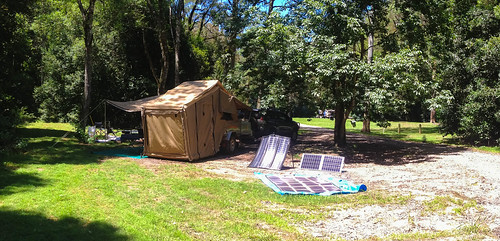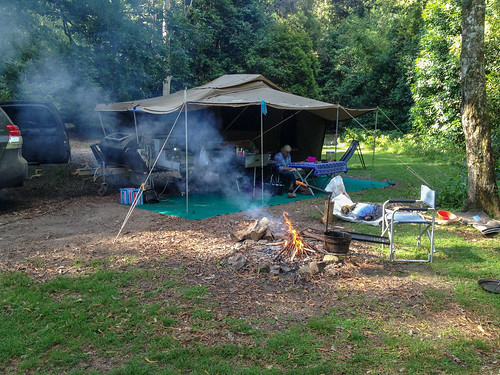Frying Pan Creek Campground
Last Updated Apr 2014
![]()
![]()
![]()
![]()
![]()
![]()
![]()
![]()
![]()
Pretty and free campground on the banks of the Telegherry River (on the opposite bank from the Coachwood camping area).
The campsites are open and grassy, with a few spots offering shade. They are mostly level and suitable for tent based camping or camper trailers.
This is the "bike friendly" campground, so probably should avoid it on weekends if you are not happy with 2-stroke fumes and alcohol fueled noise. Weekdays it is usually empty though.
As with all camping areas in this park, it can get very busy during peak times. The Telgherry River has some nice swimming holes, but if it is busy you may be sharing them.
There are long drop toilets, fire pits and rubbish bins provided. Water can be obtained from the creek, but should be treated before drinking.
Facilities and activities at Frying Pan Creek
- Number of sites:
-
100
- Camping Fees:
-
No fees are payable for this campsite
- Bookings:
-
This is a free camping area.
- How to book:
-
No bookings can be made for Frying Pan Creek, first come first served.
- Toilets:
-
Longdrop or composting
- Pets:
-
Pets are allowed with conditions
- Water Availability:
-
Non-potable water may be available. Boil all water for at least 10 minutes before drinking.
- Camp fires:
-
Fires may be allowed in built fire places. Please check local fire bans and rules.
- Barbeques:
-
Wood barbeques are available. Bring firewood and check firebans.
- Swimming:
-
This campsite is near a river or creek that has swimming holes.
- Fishing:
-
There are fishing spots at or near this campsite.
- Picnic Tables:
-
Yes.
- Horse Riding:
-
Yes.
- Canoeing / Kayaking:
-
There is no canoeing or kayaking at or near this campsite
- More Information
Location information for Frying Pan Creek
This campsite is in Chichester State Forest
There are two main sections to this State Forest, Allyn River is the western area of the park and contains a number of campgrounds. Telegherry River is Eastern side.
This campsite is accessable with regular 2wd vehicles.
Chichester Dam Road from Dungog and turn right into Wangat road to get into the forest.
Take Frying Pan Road to get to th entrance to the campsite
comments powered by Disqus
Home | Articles | FAQs | Terms | Privacy
© Net Reach Media Pty Ltd 2017
Visit our other sites
CairnsToCape.com.au
What to do, see, where to stay and the wildlife of this spectacular section of Far North Queensland
BushandBoat.com.au
Adventure tours in Port Douglas, Cape Tribulation and the Daintree Rainforest




